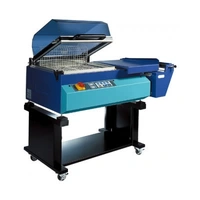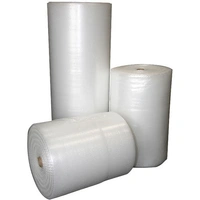The Plastic Packaging Issue and Reducing Food Waste - Difficult Choices to Make
530
In recent times we've heard all about it. It's been topical on talk shows, news programs and numerous articles. They're mostly all singing the same tune. "Fancy packing fresh fruit and vegetables into plastic packaging! Surely natures own packaging is best?' Whilst the food wastage issue doesn't purely relate to just fruit and vegetables, it's a conversation worth looking into a little further.... and what about that plastic packaging?

Food Wastage - What are the facts? (definition of food waste - to intentionally discard edible items)
- About a third of all food produced on the planet never reaches the table (1.3 billion tons).
- 870 million people go to bed hungry each night.
- Food wastage accounts for 3.3 billion metric tons of carbon dioxide making it the third largest emitter of green house gas after the US and China.
- Currently the world produces enough food to feed every person on it as well as the increase in population of 2.5 billion people expected over the next 35 years.
- According the the FAO (Food Agricultural Organisation of the UN) food that is produced but not eaten uses up a volume of water that is equivalent to the entire annual flow of the Volga (Europes largest river).
- Direct economic consequences of food wastage (excluding seafood) runs to a cost of $750 billion dollars annually.
Why Do We Have So Much Food Wastage?
- According to an FAO study 54% of food wastage occurs 'upstream' - which means wastage occurs at production, post harvest as well as handling and storage. The other 46% of food wastage occurs 'downstream' - meaning during processing, distribution and consumption.
- In developing coutries most food losses occur during agricultural production.
- In middle-high income regions most food losses occur at the retail and consumer levels (31-39%, as opposed to 4-16% in low-income/developing regions).
- In affluent regions, consumer behaviour - overreactions to 'best-before dates', failure to plan shopping & non-purchase due to slight visual imperfections whilst still being top quality causes food wastage.
- In affluent regions - lack of communication in the supply chain and shops also rejecting perfectly edible food due to aesthetics causes food wastage.
- In developing countries - significant post-harvest losses in the early stages of supply chain are a key issue due to financial and structural limitations as it results on storage and infrastructure problems
- In many developing countries climactic conditions contribute to food spoilage.
What Can We do?
According to the FAO Director General, Jose Graziano da Silva "we must all make changes at every link of the human food chain to prevent food wastage from happening in the first place, and re-use or recycle it when we can’t". For more detailed ideas on what can be done - refer to the FAO Toolkit for recommendations
Reduce - We must reduce our food wastage in the first place by improving losses of crops due to poor practices as well as balance production with demand. This would mean not wasting our resources on unneeded food in the first place.
Re-Use - We must consider re-using food within the human food chain. Find secondary markets or donate extra food to vulnerable members of society. And if it's not fit for human consumption then the next best option is to divert it back to feed for livestock.
Recycle and recover - Utilise by-product recycling with composting and incineration – allowing energy and nutrients to be recovered from food waste. This would represent a significant advantage over dumping it in landfills – which is a large producer of methane (a harmful greenhouse gas).
So What About Plastic Packaging?..the difficult choice.
So whilst plastic in terms of the environment is a dirty word, it can actually extend the life of foods considerably. So this is where the difficult choice is. Do we consider plastic packaging as an option? Or do we simply disregard it on other environmental grounds?
Here are some facts:
- Food lost in stores can be reduced by as much as 12% with modified atmophere plastic packaging, with shelf life can be increased from 5-10 days.
- The lighter weight of plastics generally means less use of resources.
- It is estimated that plastic packaging accounts for only 1.5% of oil and gas use.
- Barrier plastic can typically give 18 months of shelf life without the need for preservatives
- If plastics were not used in packaging and other materials were used instead, then waste and energy consumption would double with weight and costs quadrupaling.
Consider J.Sainsbury - a British grocer who claims to have reduced store waste by more than half after moving beef steak lines into vacuum packaging.
Consider Mark Little - in charge of food wastage at Tesco , who points out that for every tonne of food wastage will result in 3.5 tonnes of carbon dioxide as opposed to a tonne of packaging results in 1-2 tonnes of emissions.
And according to Mintels' (a research company) Global Packaging Director David Luttenberger, the throwaway culture of today will evolve into one that understands and embraces the role of packaging as a primary means of reducing global food and product waste. "A focus on package innovations that extend food freshness, preserve ingredient fortification, and ensure safe delivery is increasingly benefitting consumers".
We should also mention that resealable packaging assists the average consumer in that it allows people to prepare what they need and freeze the rest.
What are the Benefits of Reducing Food Waste?
- Better manage our resources like water
- reduce carbon emissions
- save money!
- Let's feed everyone.
Ultimately reducing food waste is everyone's responsibility. From countries, governments, corporates, communites and individuals. We should all do our part. We can all help reduce the impact on our environment and help feed the people of the world.
Here's some packaging products which will assist with extending the life of food:
- Vacuum Pouches used with Vacuum Packing Machines
- Stand Up Pouches/Doypack zip lock bags - available in a range of sizes and colour choices.
- Domestic Vacuum Sealer
- Shrink Wrapping - Shrink Wrap Machines and Shrink Film
Information in this article has primarily been sourced from:
http://www.fao.org/news/story/en/item/196220/icode/
https://news.nationalgeographic.com/news/2015/01/150122-food-waste-climate-change-hunger/
http://www.bpf.co.uk/Packaging/Position_Statements/Shelf_Life_Extension.aspx
Food & Drink Business Magazine - "5 Trends in global packaging" Jan/February 2018







